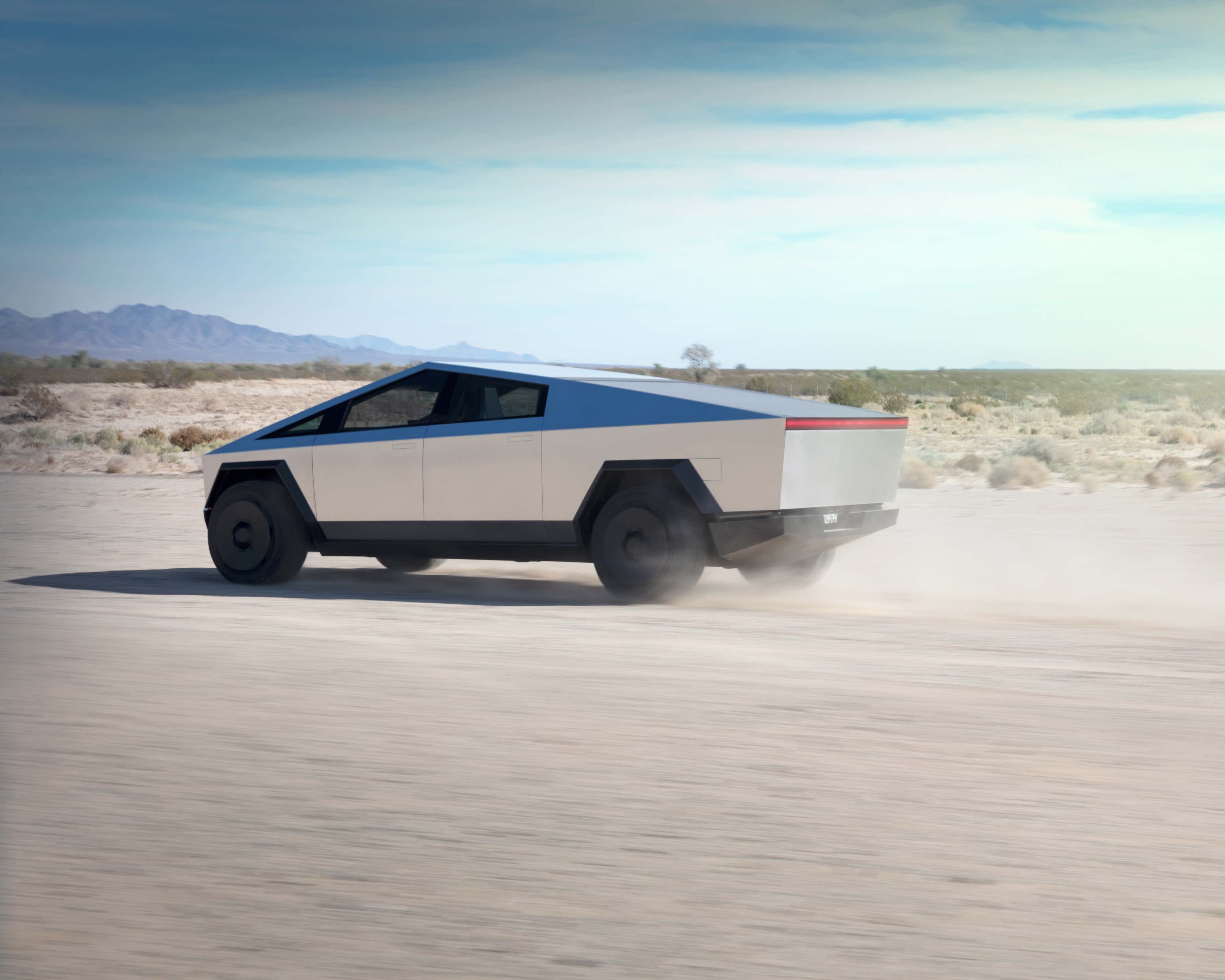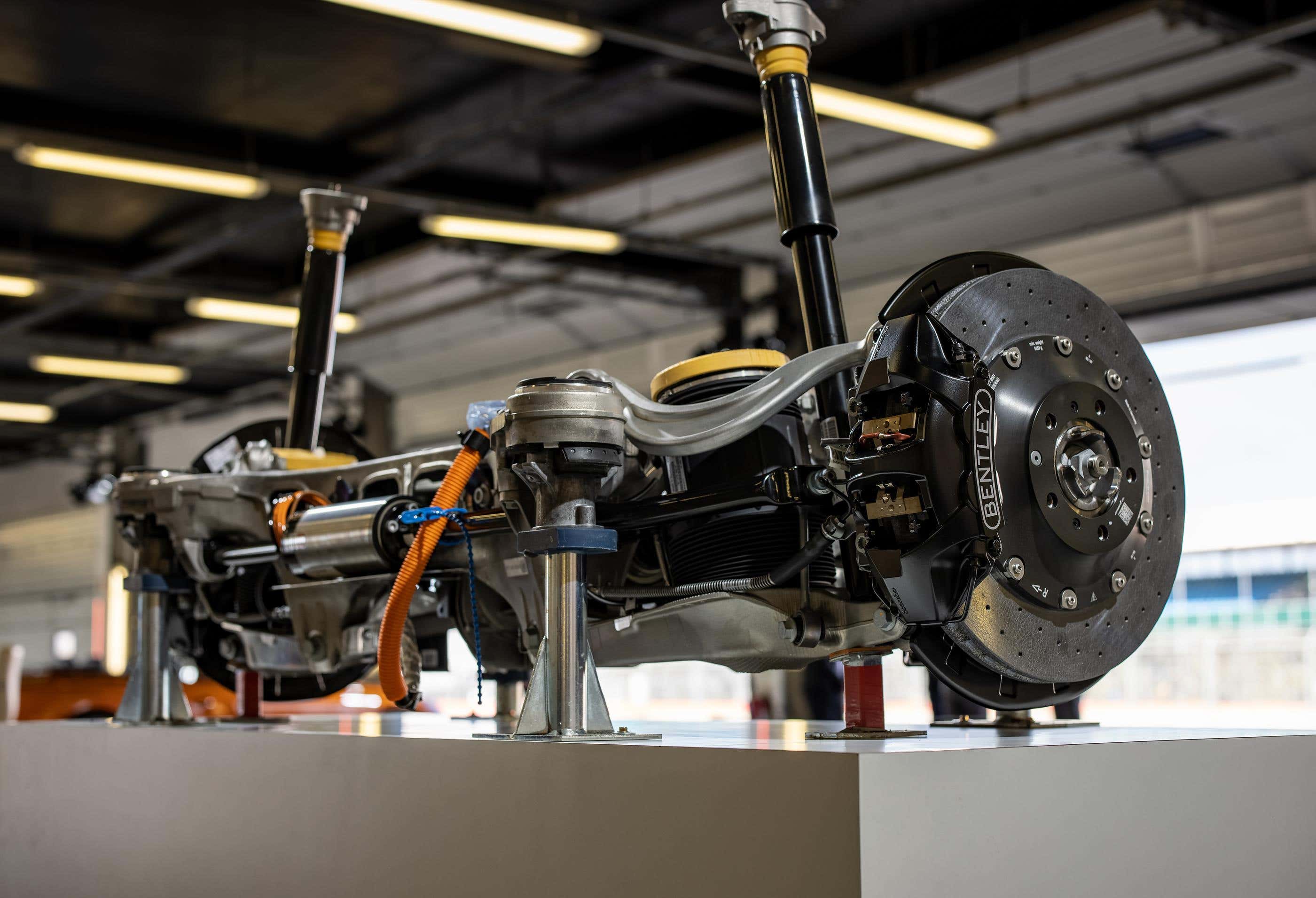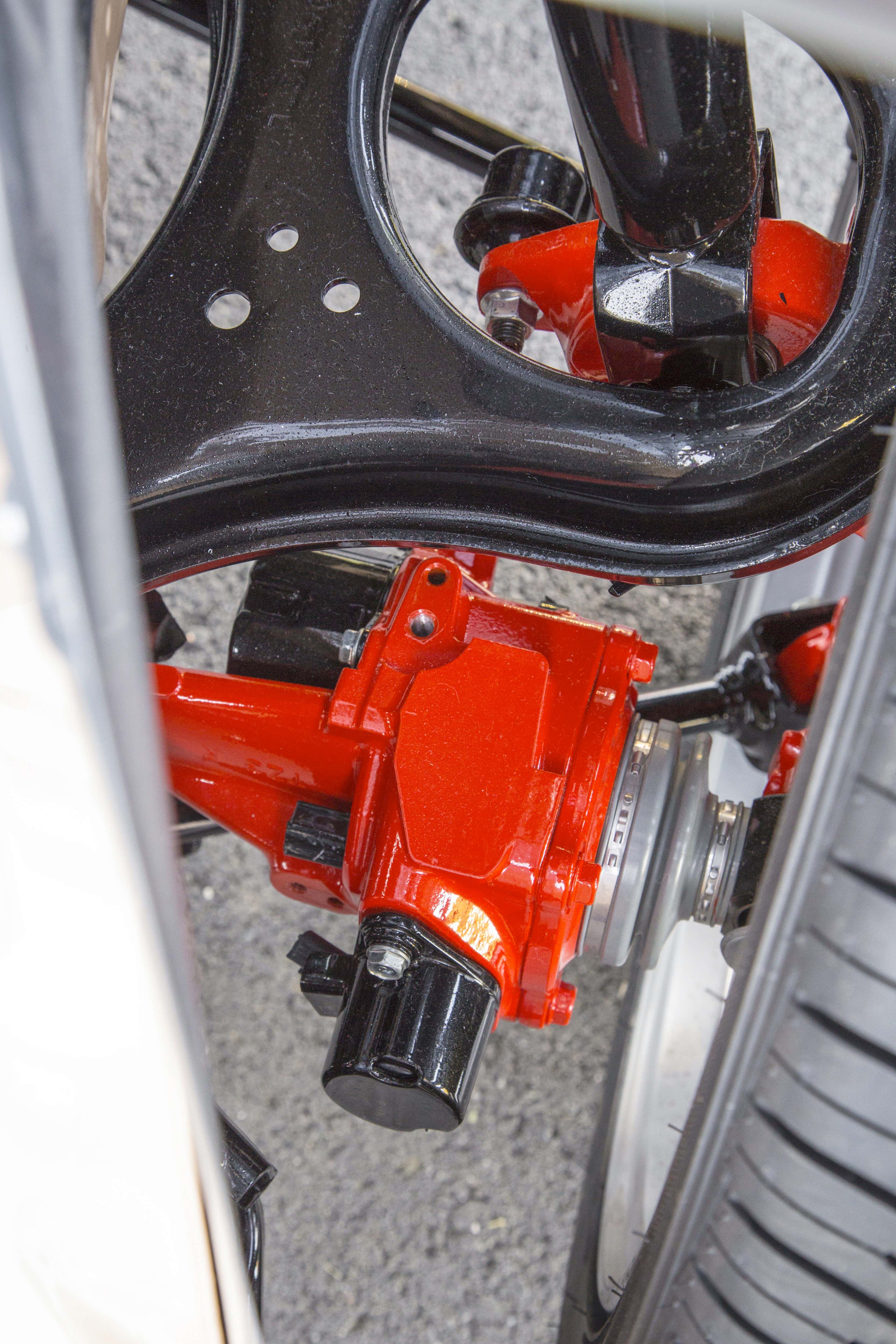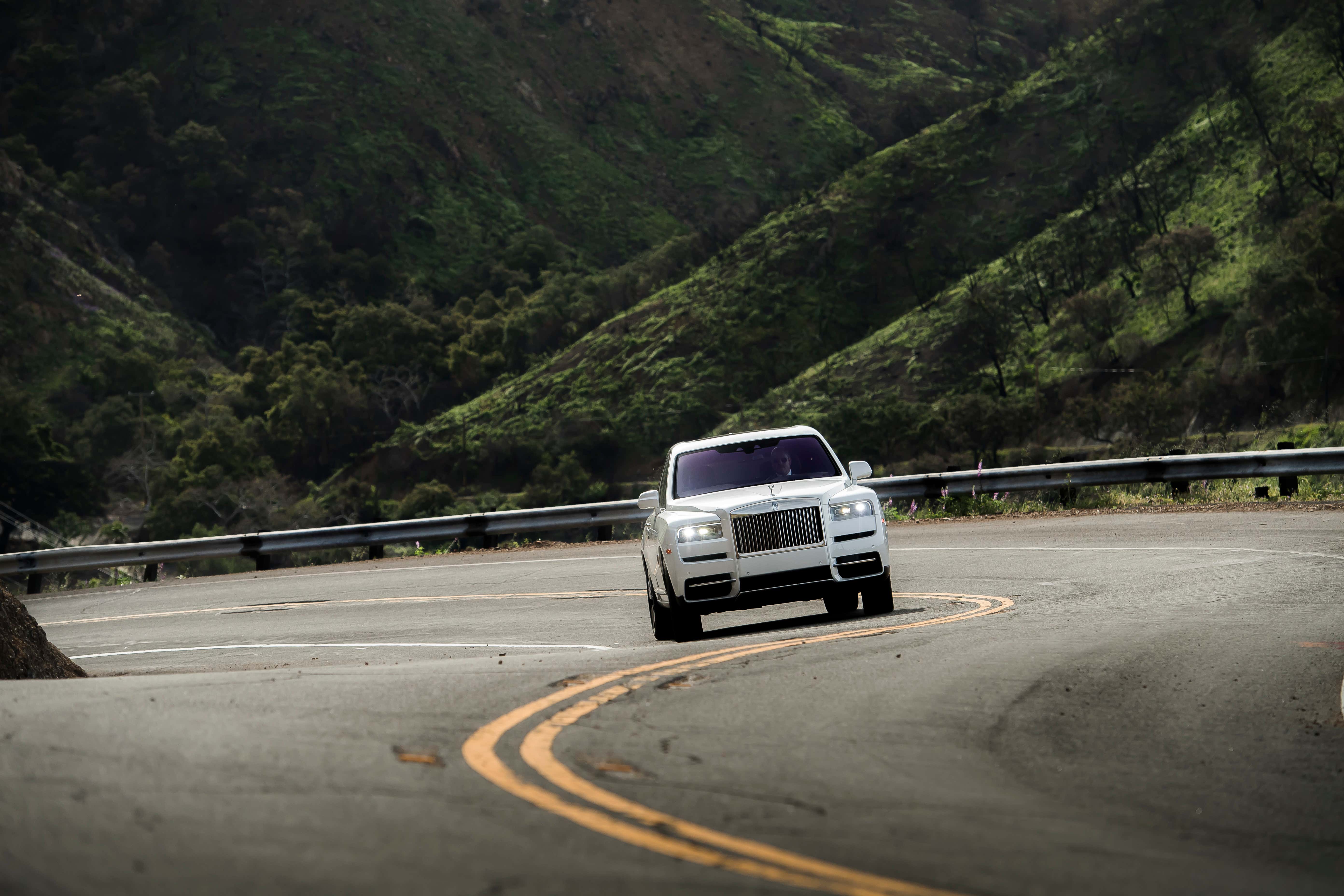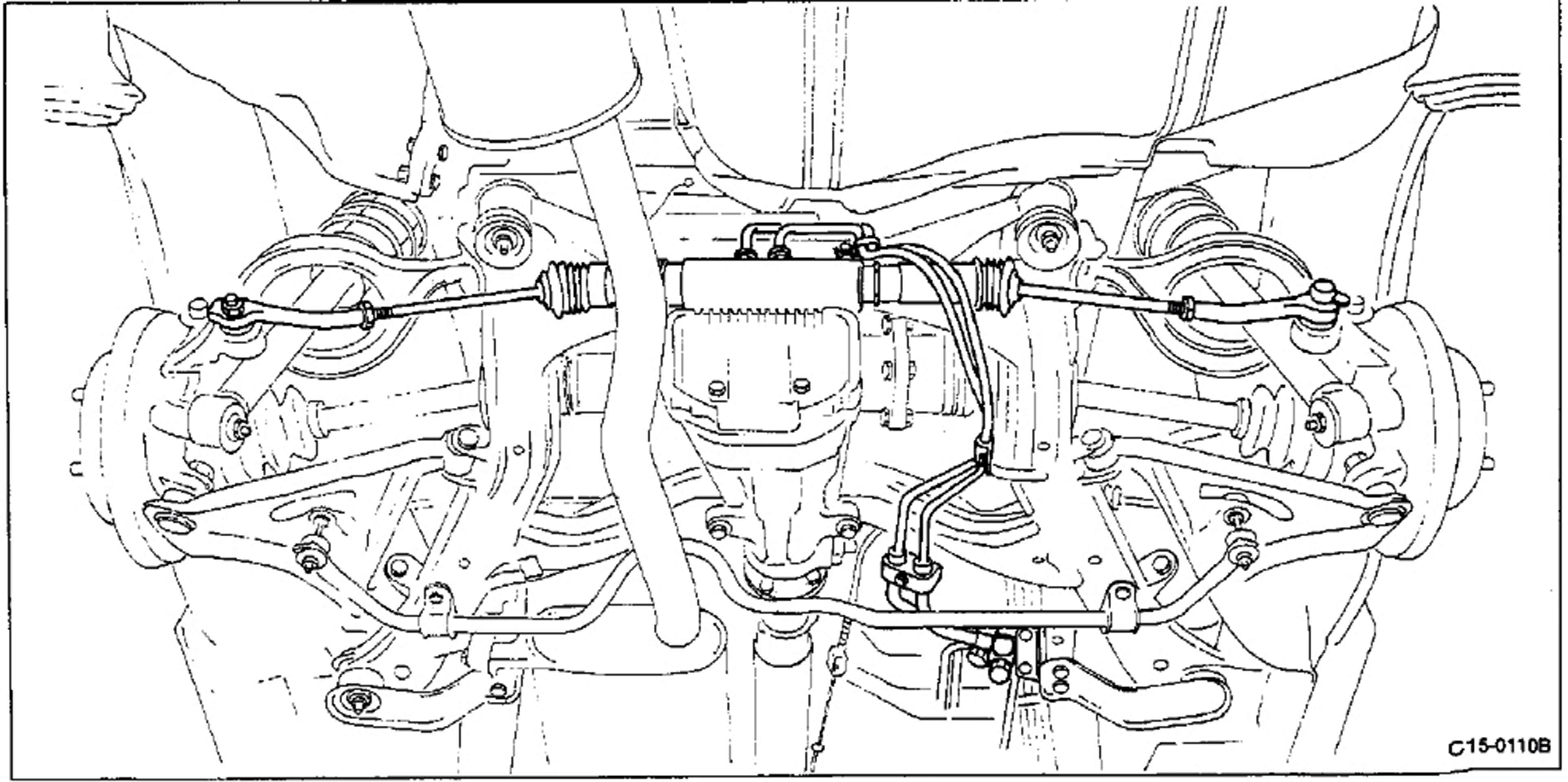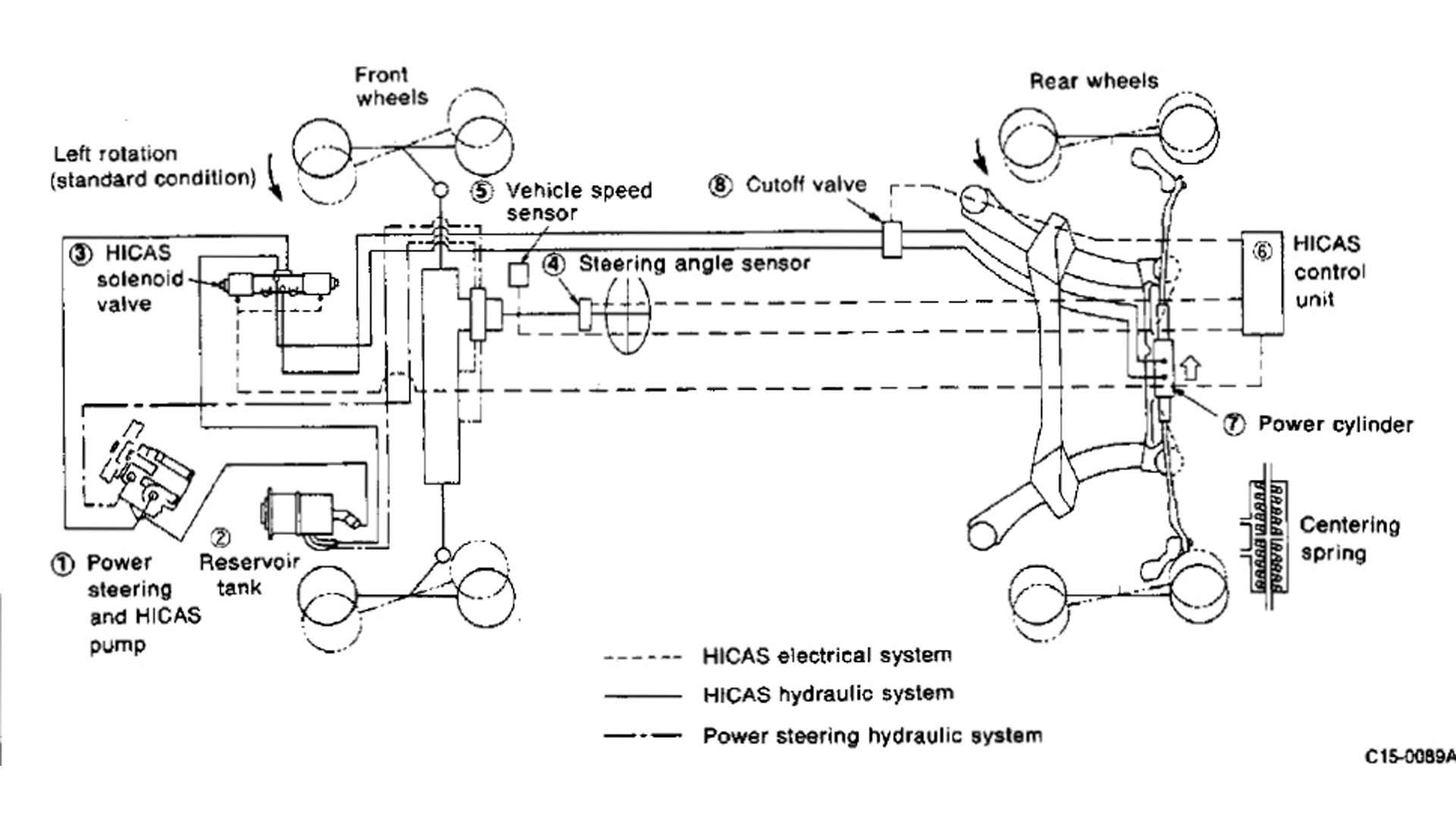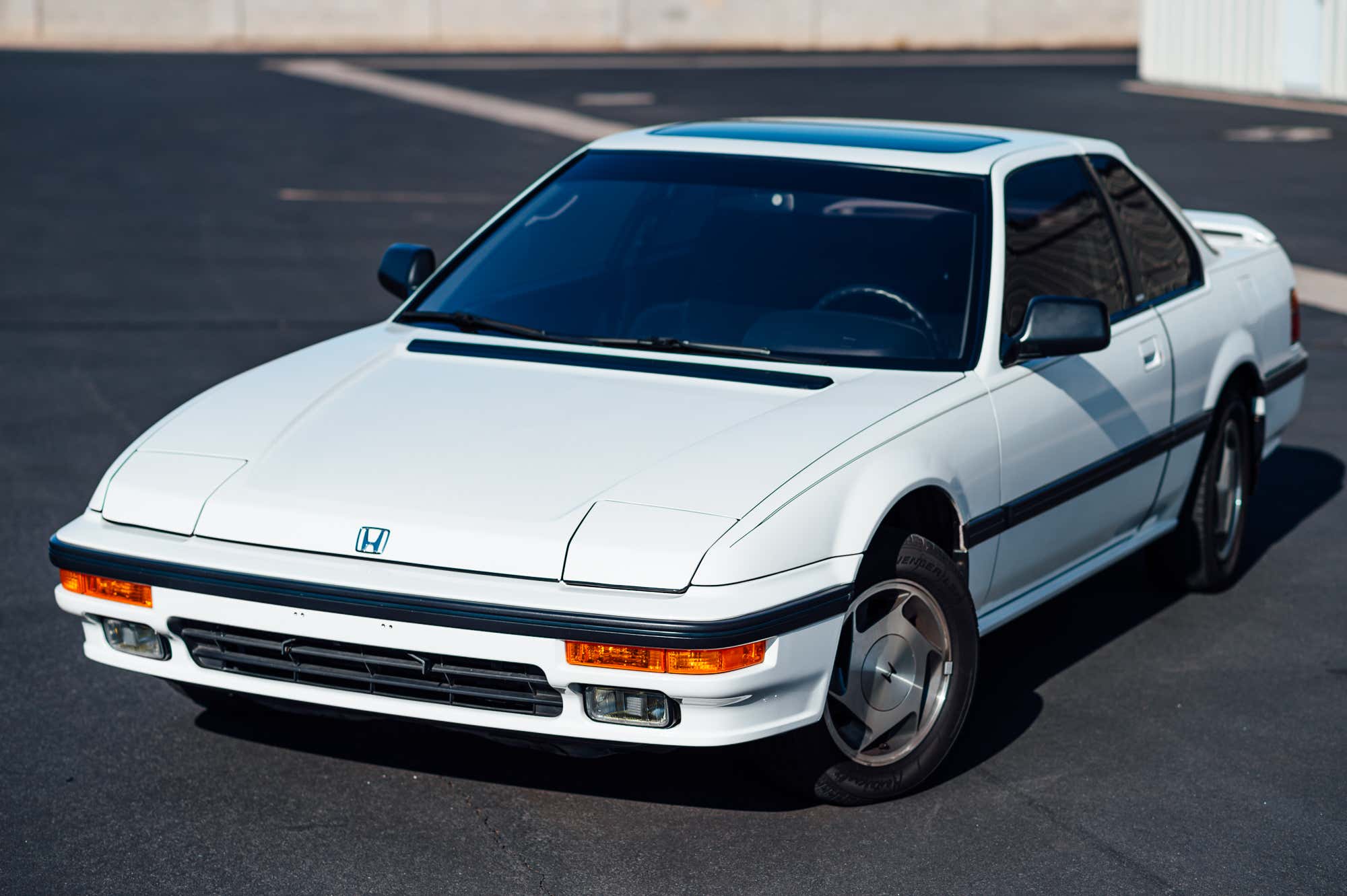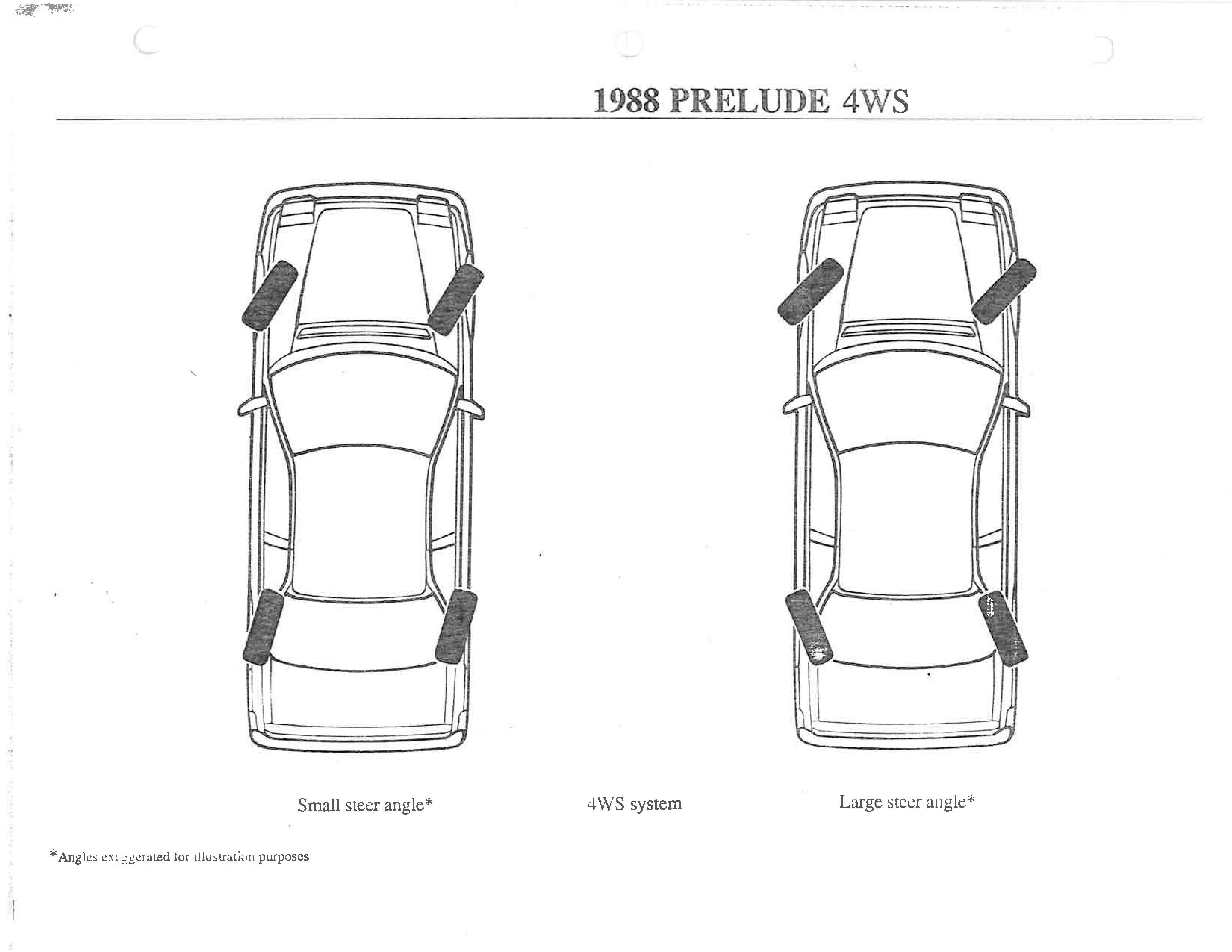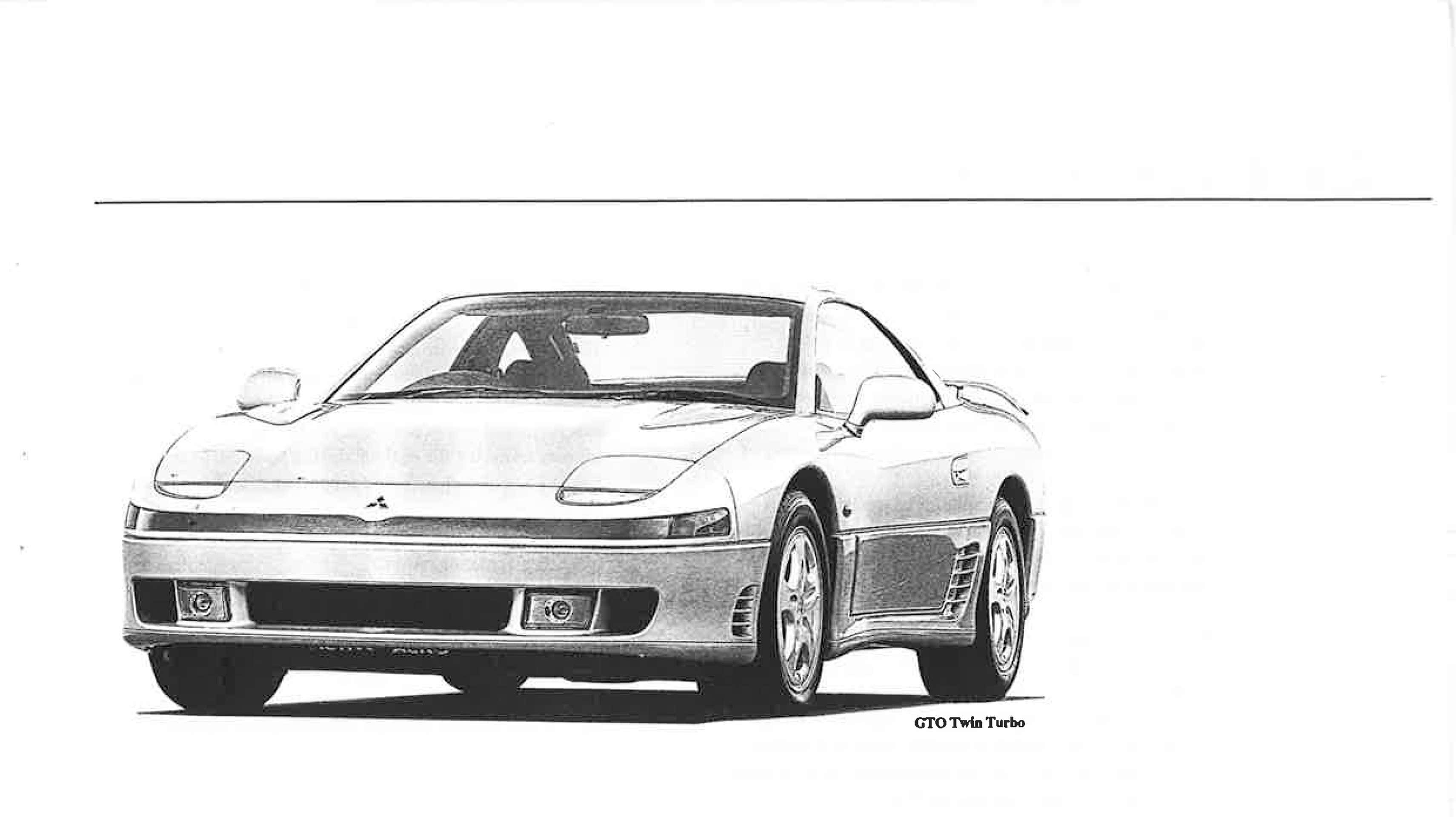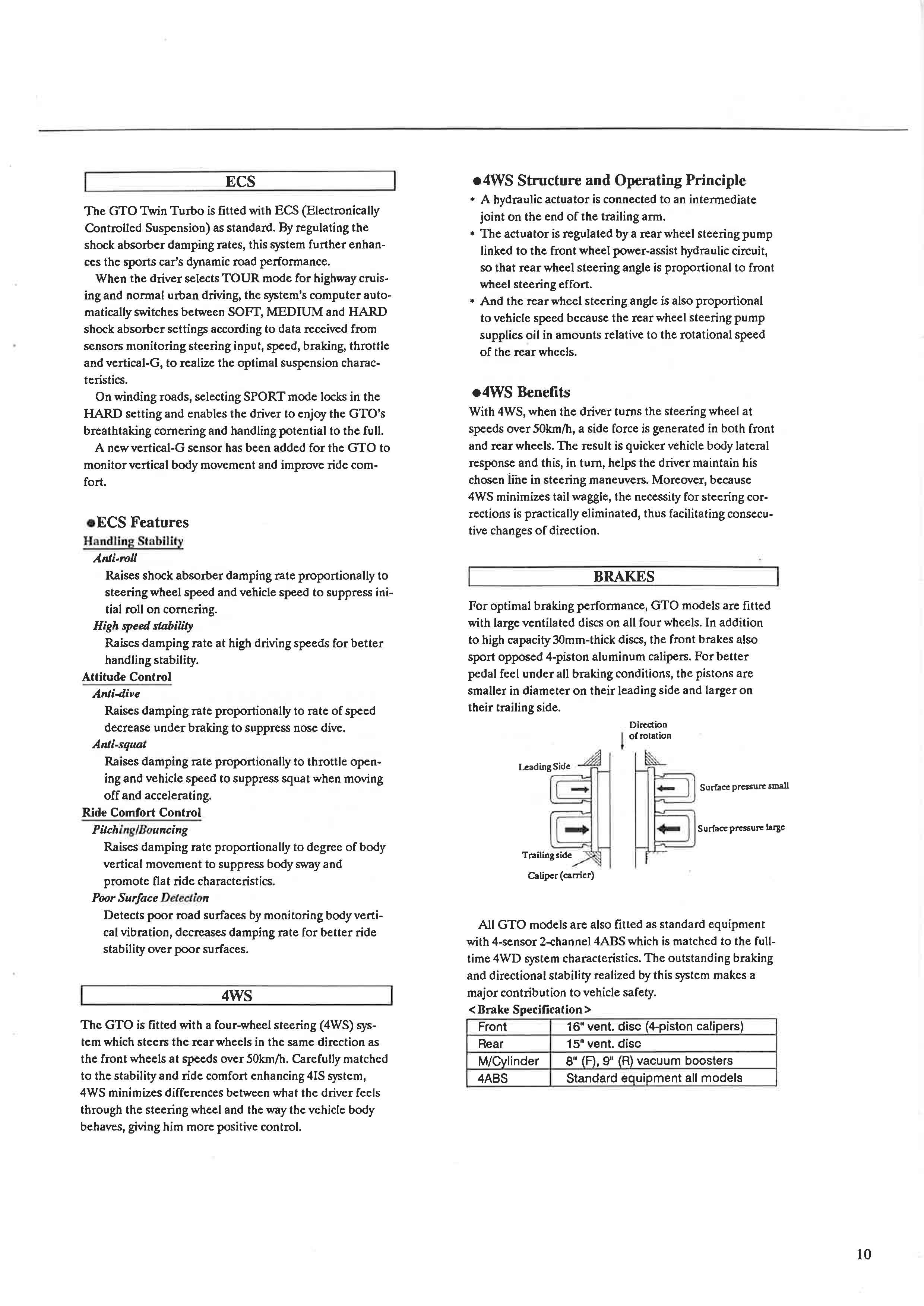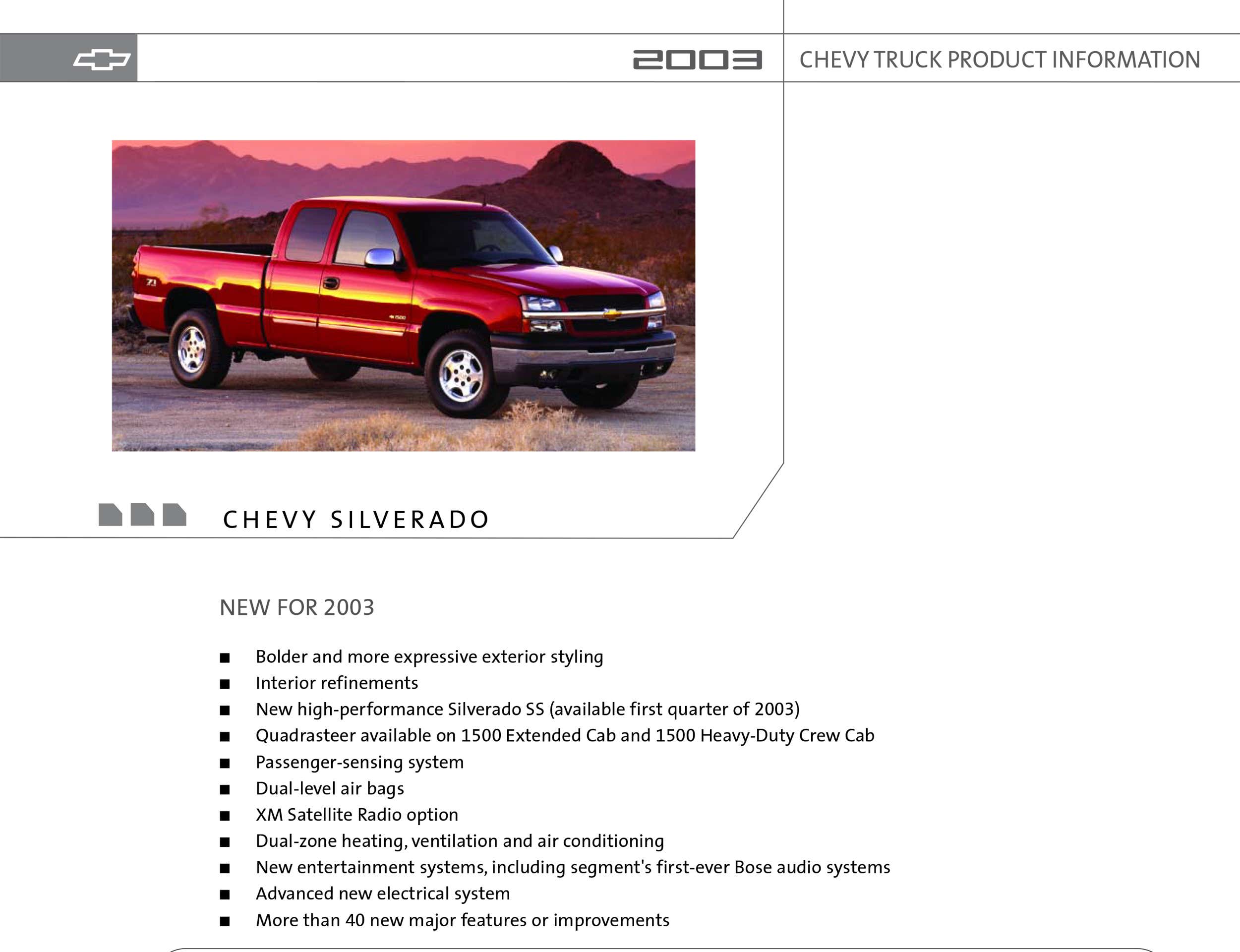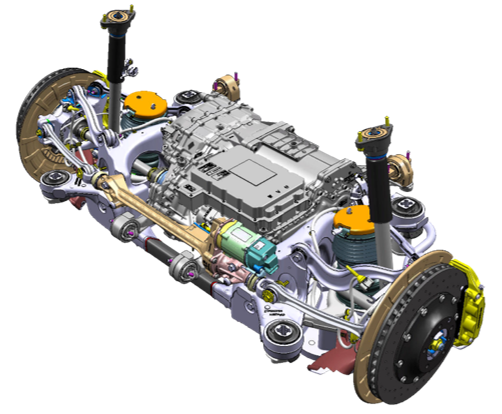Vehicles are getting more technologically complex, physically larger, and wildly heavy — I’m looking at you, GMC Hummer. Some of that is due to increased safety standards for rollover risk, offset hits, and the need for high-strength steel in a vehicle’s crash structure, but safety is not the only cause. There’s also the abundance of electrified offerings that added weight due to dense battery systems.
No matter the reasoning behind this trend of scaling up, the result is the same: crappy handling. Weight and size make for horrendously slow directional changes. The old adage of the difficulty in course correcting a ship comes to mind. Consumers, however, still demand sports-car handling from their 6,000-pound Rolls-Royce Cullinans, which is why four-wheel steering has quickly become one of the mechanical mainstays of the automotive world.
The Drive and its partners may earn a commission if you purchase a product through one of our links. Read more.
The term four-wheel steering has a few variations, such as all-wheel steering and rear-wheel steering (as in Tesla’s latest Cybertruck announcement). With so many terms and even brand names floating out there, it can get mighty confusing for the average person thumbing through the latest Porsche brochure.
To better shed light on rear-wheel steering, which was invented in 1893, The Drive’s Guides & Gear section put together the ultimate explainer on four-wheel steering systems, how they work, who makes them, and how they affect your ride’s performance. Let’s get rollin’.
The Bentley Continental GT’s rear axle.
What Is Four-Wheel Steering and How Does It Work?
Rear-wheel steering is a mechanism that, when the steering wheel is turned, actuates the rear wheels’ angles and either turns them in tandem with the front wheels or in the opposite direction to better increase a vehicle’s low- or high-speed agility.
We’ll get into the different types of rear-wheel steering systems in a moment, but the general premise of these systems is using a set of hydraulic or electric actuators to change the toe of the rear wheels.
Toe refers to the angle a wheel is pointed in or out from the car, hence the terms “toe in” and “toe out.” Toe can also be described as negative and positive. In most situations, toe refers to a car’s front wheels and, depending on whether both wheels are pointed in or out, it affects the car’s high-speed stability (toe in) or low-speed agility (toe out).
In rear-wheel steering, the vehicle’s system changes both rear wheel’s toe in tandem, which means the rear wheels move right or left in unison so they’re pointed in the same direction. This is the complete opposite of how toe works on a vehicle’s front wheels.
Acura’s P-AWS system shown in a cutaway.
While each system is unique, the resulting movement from the rear tires in four-wheel steering is exactly the same across different systems. When the driver turns the steering wheel at low speeds, the front wheels turn in the direction of travel while the rear wheels turn in the opposite direction, effectively reducing the car’s turning circle. This makes low-speed maneuvers quicker and easier.
Steering at higher speeds turns both the front and rear wheels in the same direction for increased high-speed stability. What that means in the performance world is you can have a long, somewhat heavy vehicle such as a Porsche Panamera keep up with a sports car with a shorter wheelbase such as a Porsche 911.
These systems also give larger, heavier vehicles better performance than they would have if only the front wheels turned. This is seen in examples such as the Lamborghini Urus, Bentley Flying Spur, and the Mercedes-Benz S-class.
There Are Different Types of Four-Wheel Steering
Different manufacturers have different solutions to rear-wheel steering, although they all serve the same purposes. Some rely on mechanical-only systems, such as Nissan’s old HICAS (High-Capacity Actively Controlled Steering) system, while most utilize electro-mechanical versions, such as Audi’s Dynamic All-Wheel Steering system, Porsche’s Rear-Axle Steering, and the Active Kinematics Control (AKC) systems supplied by ZF to manufacturers such as Ferrari and Cadillac.
Again, these two systems work virtually identically by changing the rear wheels’ toe in or out, but they differ on what actuates them. In a mechanical system like Nissan’s HICAS, which hasn’t been used in Nissans since the R34-generation GT-R or in Infinitis since the G37, hydraulics powered by the power-steering pump were used to actuate the wheels. Speed sensors would then be used to determine which way the rear wheels would turn and how much. Honda’s Prelude Si 4WS had a similar system.
Not the typical area for a Roller.
Electromechanical four-wheel steering systems are now far more common and more advanced than those earlier versions. Controlled by the car’s ECU and a number of sensors along its drivetrain, today’s four-wheel steering systems offer far more precise wheel placement, angles, and capabilities than their predecessors.
Although the basic result is the same, manufacturers also differ in how much steering angle the rear wheels allow, ranging from 1 to 15 degrees.
The O.G. Four-Wheel Steering Cars and How They Worked
Here’s the genesis of four-wheel steering in the popular zeitgeist, the O.G. four-wheel-steer sports cars.
The rear subframe of the Super HICAS system.
Nissan GT-R HICAS
Though Nissan’s HICAS system is known for its use in the Skyline GT-R platform, it wasn’t the first to get it. The system was first shown in 1985, but its first practical application was on the 1986 Skyline GTS.
HICAS was developed at Nissan by the father of the Skyline, Shin’ichiro Sakurai. The chief engineer worked for Prince before it was incorporated into Nissan and was heavily involved in the wild R380. He was also famous for his way with words. That goes for his description of how he envisioned HICAS.
Naganori Ito, the person Sakurai chose to eventually succeed him, once described what his mentor wanted from the HICAS system:
“The basic philosophy of the Skyline is to deliver reliability and outstanding driving performance. The ideal is a car that is absolutely true to the driver’s intentions. It’s the same as a horse and rider becoming one when the rider is on the horse’s back and the horse is in motion. A horse generates propulsion by pushing off with its back legs and applying torque to move itself forward. It’s quite natural. This is a good example of the rear-wheel-drive system in cars. But if you observe the movement of a horse more closely, you see that it also pushes off the ground with its front legs, and it also controls the direction of its movement with its back legs. To duplicate this, cars need four-wheel-drive and four-wheel-steering systems. These are the functions of the ATTESA and HICAS systems.”
A diagram of HICAS.
Nissan explains how HICAS works like this:
“Earlier HICAS versions used hydraulics to steer the rear wheels. The hydraulic system was powered by the power-steering pump and used speed sensors to determine how much and in which direction to steer the rear wheels. Later versions, called Super HICAS, moved to an electric actuator for the rear steering rack, making the system much lighter. The Super HICAS uses input from a speed sensor and steering-wheel-angle sensor through the system’s HICAS computer to determine how quickly you’re entering a turn and adjusts the angle of the rear wheels to match the driving conditions. HICAS and Super HICAS rear-wheel steering is limited to about one degree in either direction.”
In addition to the Skylines, Nissan’s Z32-generation 300ZX, 180SX, and 240SX, as well as Infiniti’s M35, M45, Q45, and Q37 were also specced with HICAS and Super HICAS.
A minty Prelude Si 4WS.
Honda Prelude Si 4WS
The Prelude Si 4WS isn’t exactly something you’d think Honda would bring out in the late 1980s. On second thought, if you consider much of that period was Escobar-produced neon, then a hot economy-car-based four-door with all-wheel steer makes all the sense in the world.
The basic premise of the Prelude Si 4WS’s four-wheel steering system came out of Honda’s desire to “propel the handling and maneuverability of the automobile into a new dimension.” Honda began developing the Prelude’s 4WS system in 1977, which produced a steer-angle-dependent four-wheel steering system. Purely a mechanical system, the Prelude’s four-wheel steering used two steering gearboxes, one at the front and one at the rear with a center shaft mechanically linking the two.
How the Prelude Si 4WS works.
Honda sent over the Prelude Si 4WS’s original news release, which had a detailed description of how the system worked.
“When the driver turns the steering wheel, the rack-and-pinion mechanism in the front steering gearbox causes the rack to move laterally,” according to the release. “This rack stroke steers the front wheels. At the same time, it rotates an output pinion shaft via another rack and pinion housed inside the gearbox. This output pinion shaft transmits the rotation of the steering wheel to the rear steering gearbox via the center shaft. A stroke rod inside the rear steering gearbox moves in an axial direction to steer the rear wheels via the tie rods.”
How that worked in relation to the car’s speed is even wilder.
“For steering-wheel inputs of less than about 140 degrees from the straight-ahead position, the output stroke moves in one direction,” states the release. “For angles greater than that, the stroke and the relative motion at the rear gradually and smoothly diminish and eventually turn the opposite direction. Thus, the rear-steering gearbox contains a mechanism that progressively reverses the direction of output in response to the magnitude of the steering input.”
Honda adds: “Mechanically, when the steering wheel is initially turned away from the straight-ahead position, the rear wheels steer in the same direction as the front wheels. But, when the steering input is increased and the wheel is turned by more than a specified amount, about 240 degrees, the rear wheels then start to steer in the opposite direction.”
When Road & Track tested the Prelude Si 4WS in 1987, it actually outperformed a Porsche and a Ferrari in a slalom test. Honda’s 4WS system in the Prelude soldiered on in the following two generations, although the Prelude’s final generation was a Japan-only option and only in the Si and SiR models.
Period correct.
Mitsubishi 3000GT VR-4/GTO
Although we only know the mighty Mitsubishi 3000GT VR-4 in the United States, its Japan-only GTO lineage can be traced to the Galant VR-4 and the introduction of Mitsubishi’s Dynamic Four system. Unlike others here, Mitsubishi’s Dynamic Four wasn’t a lone system, it also included four-wheel drive, four-wheel steer, four-wheel independent suspension, and four-wheel ABS, hence the name.
Launched in 1987, the Galant VR-4 was the genesis for not just the 3000GT but also the almighty Lancer Evolution. And this proto rally car not only spawned Dynamic Four but also Active ECS for the two-wheel-drive models, the first active suspension system on the market. Mitsubishi saw the two as opposite sides of the same coin and labeled the umbrella its Active Footwork System, which is a great name for a set of systems.
According to the Galant’s original news release: “The Active Footwork System adopted for the Galant this time is a generic name for the Active Four (four-wheel-drive models) and Active ECS (two-wheel drive), which mainly consist of the following suspension systems to create more room for driving from low to high speeds and to make driving itself easier in the age of high performance. It is a revolutionary new system that further improves the vehicle’s dynamic performance in terms of accelerating, cornering, and braking by increasing the grip between each tire and the road surface.”
As for the four-wheel-steering system, according to the release, it’s a fully hydraulic system that is sensitive to vehicle speed and steering force to further improve steering response in the medium to high speed range. How that works is through hydraulic pressure sent to the trailing-arm joints of the rear suspension up to 1.5 degrees, although that depends on the steering force and vehicle speed of more than 31 mph.
The original press release on four-wheel steering.
Three years later, Mitsubishi introduced the 3000GT (GTO in Japan) with Active Footwork System and the tagline, “The GTO. Designed to enable drivers of all abilities to enjoy its high levels of performance — safely, enjoyably, and as their fancy takes them.”
According to the GTO’s original Japanese press release, the four-wheel-steering system worked as such: “A hydraulic actuator is connected to an intermediate joint on the end of the trailing arm. The actuator is regulated by a rear-wheel-steering pump linked to the front-wheel power-assist hydraulic circuit, so that the rear-wheel steering angle is proportional to front-wheel steering effort. The rear-wheel steering angle is proportional to vehicle speed because the rear-wheel steering pump supplies oil in amounts relative to the rotational speed of the rear wheels.”
Paired with either a naturally aspirated V-6 or a twin-turbocharged V-6 in the 3000GT VR-4, the 2+2 sports car was built to go up against the Skyline GT-R, Supra, and RX-7, and also came with active aerodynamics both front and rear. The 3000GT/GTO’s release also came during the “gentleman’s agreement” period of Japanese performance cars, which meant that performance cars were limited to about 276 horsepower, at least on paper. A more accurate number for the 3000GT VR-4, however, was likely 300-350 horsepower.
What’s interesting is that although some of these systems transferred to the newly named Super All-Wheel Control (S-AWC) system for the Mitsubishi Lancer Evolution, the direct descendant of the Galant VR-4, it didn’t bring over the four-wheel steering system — nor did the Pajero Evo.
QUADRASTEER TRUCK, BABY!
General Motors Quadrasteer
Quadrasteer from General Motors is definitely the oddball of the group, but it deserves some attention as the first application to full-size pickup trucks. Unfortunately for GM, it didn’t last long.
Trucks in the U.S. are big business. That may be the understatement of the decade, but the amount of research and development spent on one-upping the competition is wild. Everything is on the table in terms of what manufacturers can offer its consumers to lure them away from other makes and models. In 2002, GM became obsessed with the idea that four-wheel steering was the next big thing. Welcome to Quadrasteer.
In the original news release from 2002, GM states: “General Motors has taken the industry lead by offering the Quadrasteer four-wheel-steering system for the first time in a full-size truck. The innovative system, which makes driving a truck safer, easier, and more convenient, will debut on the GMC Sierra Denali full-size pickup in the fourth quarter of 2002. Quadrasteer marks a milestone in full-size truck handling and control. It’s an electromechanical system that turns the Sierra Denali’s rear wheels (up to 12 degrees) in relation to the front wheels, resulting in unprecedented low-speed maneuverability and high-speed stability.”
Unlike other four-wheel steering systems, GM’s was selectable, allowing for the usual front-wheel steering as well as four-wheel steering. Along with these modes, GM also included a four-wheel-steer towing mode, all of which was actuated by a set of buttons on the dash. According to that release, “Quadrasteer operates by sensing the driver’s desired steering input by way of a steering-wheel-position sensor. This information is fed to a microprocessor that determines the appropriate rear-wheel angles, based on steering input and vehicle speed. The microprocessor feeds its data to an electric motor, which, based on algorithms, drives the rear steering rack through a planetary gearset. If a system failure is detected, Quadrasteer’s failsafe mechanisms revert to two-wheel steering.”
Despite the benefits of four-wheel steering on a full-size truck, GM killed the program after 2005. Only the GMC Sierra, Sierra Denali, and Yukon, as well as the Chevrolet Silverado and Suburban, could be equipped with Quadrasteer, which cost $5,600 at launch, although that was reduced to $1,000 before the program was axed.
Manufacturers That Currently Offer Four-Wheel Steering in Its Cars
As you can imagine given the benefits of rear-wheel steering in heavy cars, most manufacturers offer some form of rear-wheel steering. No two systems are the same, however, nor do they have the same designation.
To better understand the systems, here are the manufacturers that offer them and what they’re called.
Cadillac: Active Rear Steering
GMC: Crab Walk
Lamborghini: Lamborghini Rear-wheel Steering
Mercedes-Benz: Rear-Axle Steering
Acura: P-AWS (Precision All-Wheel Steer)
BMW: Integral Active Steering
Rolls-Royce: Rear-Axle Steering
“The little green blob is the steering motor,” Porsche spokesperson.
Lexus: Dynamic Rear-Wheel Steering
Genesis: Genesis Rear-Wheel Steering
Ferrari: Virtual Short Wheelbase
Audi: Dynamic All-Wheel Steering
Bentley: Rear-Axle Steering
Porsche: Rear-Axle Steering
Video
This is one topic that’s better illustrated in video form since rear-wheel steering systems are complicated pieces of technology. Here’s one from our friend, Jason Fenske of Engineering Explained.
FAQs About Four-Wheel Steering
You’ve got questions. The Drive has answers.
Q: What’s the difference between all-wheel drive and all-wheel steer?
A: All-wheel drive is when the vehicle’s power can be sent to all four wheels, to some degree. All-wheel steering is a system that allows your car’s four wheels to turn.
Q: Is my all-wheel steering system always on?
A: It is. These systems enhance both low- and high-speed stability and agility, so they’re always on to assist in your car’s performance and function. Rad.
Q: Which car had the first all-wheel-steering system?
A: The very first four-wheel-steering system was developed in 1893 by the British engineer Joseph Diplock. He patented the first four-wheel drive, four-wheel steer system as well as the pedrail wheel.
Let’s Talk: Comment Below and Reach Out to the Guides & Gear Editors
We’re here to be expert guides in everything “how to” related. Use us, compliment us, yell at us. Comment below, and let’s talk. You can also shout at us on Twitter or Instagram or reach us all here: [email protected].
- Jonathon Klein: Twitter | Instagram
- Tony Markovich: Twitter | Instagram
- Chris Teague: Twitter | Instagram
- Hank O’Hop: Twitter | Instagram
RELATED
Is Hydraulic Power Steering Actually Better Than Electric?
And how in all that’s good and decent does power steering even work? Our experts have the answer.READ NOW
RELATED
F1 Steering Wheels: Every Button, Paddle, and Knob Explained
No one is winning the title without a wheel to steer.READ NOW
RELATED
What Is Oversteer and Why Is It Hella Fun?
Sorry, officer, I was on my way to deliver tofu.READ NOW
Source: Read Full Article

